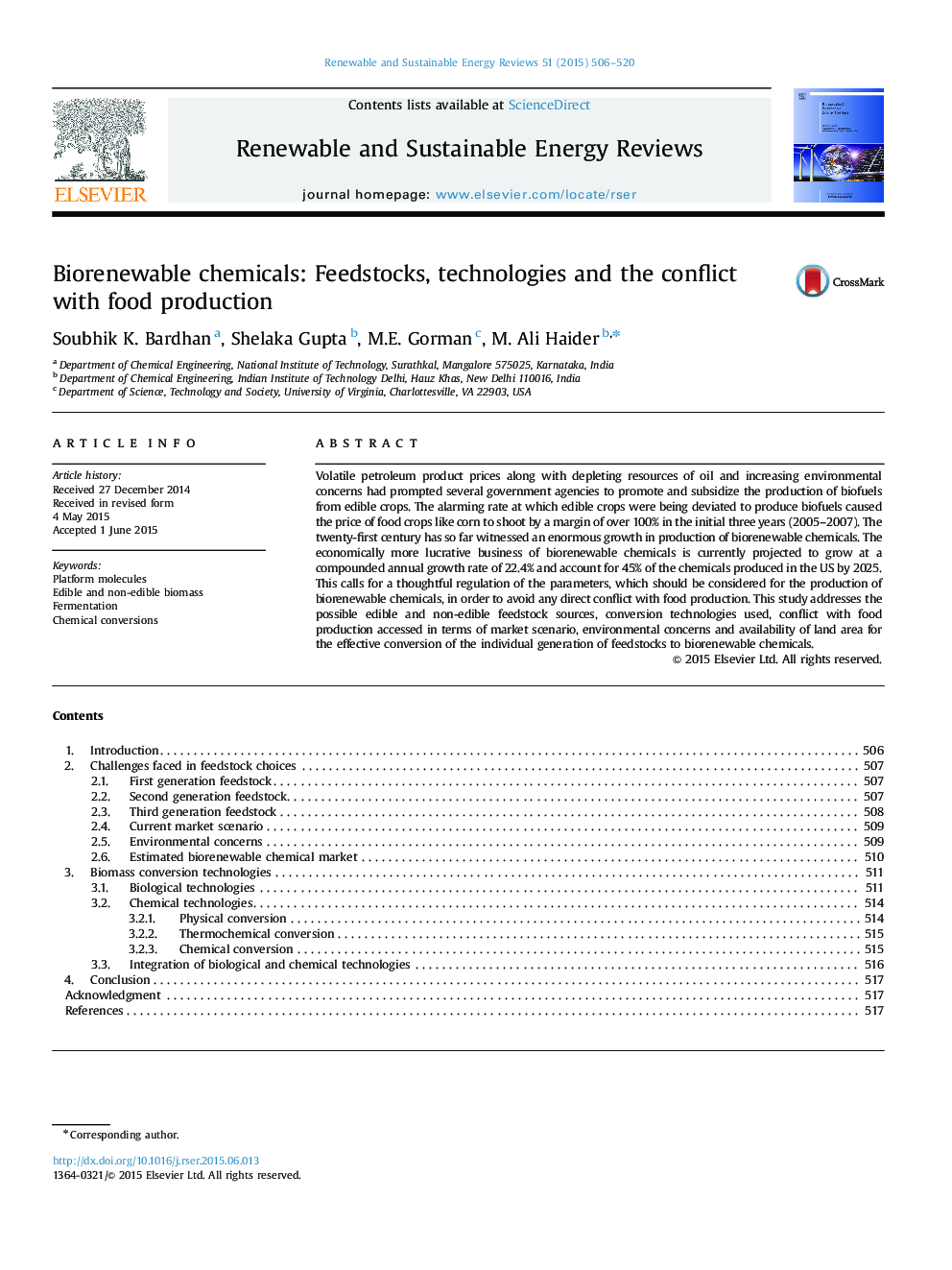| Article ID | Journal | Published Year | Pages | File Type |
|---|---|---|---|---|
| 8115742 | Renewable and Sustainable Energy Reviews | 2015 | 15 Pages |
Abstract
Volatile petroleum product prices along with depleting resources of oil and increasing environmental concerns had prompted several government agencies to promote and subsidize the production of biofuels from edible crops. The alarming rate at which edible crops were being deviated to produce biofuels caused the price of food crops like corn to shoot by a margin of over 100% in the initial three years (2005-2007). The twenty-first century has so far witnessed an enormous growth in production of biorenewable chemicals. The economically more lucrative business of biorenewable chemicals is currently projected to grow at a compounded annual growth rate of 22.4% and account for 45% of the chemicals produced in the US by 2025. This calls for a thoughtful regulation of the parameters, which should be considered for the production of biorenewable chemicals, in order to avoid any direct conflict with food production. This study addresses the possible edible and non-edible feedstock sources, conversion technologies used, conflict with food production accessed in terms of market scenario, environmental concerns and availability of land area for the effective conversion of the individual generation of feedstocks to biorenewable chemicals.
Keywords
Related Topics
Physical Sciences and Engineering
Energy
Renewable Energy, Sustainability and the Environment
Authors
Soubhik K. Bardhan, Shelaka Gupta, M.E. Gorman, M. Ali Haider,
